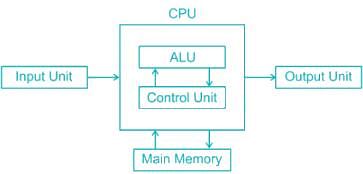Test: Computer Organisation - Grade 11 MCQ
15 Questions MCQ Test Computer Science for Grade 11 - Test: Computer Organisation
Which of the following memory is Independent of the address bus?
1) Cache memory
2) Primary memory
3) Main memory
4) Secondary memory
1) Cache memory
2) Primary memory
3) Main memory
4) Secondary memory
A stack-based CPU organization uses_______ address instructions
1) 2
2) 0
3) 1
4) 3
1) 2
2) 0
3) 1
4) 3
| 1 Crore+ students have signed up on EduRev. Have you? Download the App |
Which of the following is a type of I/O device?
1) Block device
2) Character device
3) Device controller
4) Both block device and character device
1) Block device
2) Character device
3) Device controller
4) Both block device and character device
For multiprocessor system, interconnection network - cross bar switch is an example of
The first instructor of bootstrap loader program of an operating system is stored in ____________.
Which of the following operation is mainly performed by RAM?
The organization and inter connection of the various components of computer system is.
Consider a memory system having address spaced at a distance of m, T = Bank cycle time and n number of banks, then the average data access time per word access in synchronous organisation is
|
84 videos|19 docs|5 tests
|
|
84 videos|19 docs|5 tests
|


















